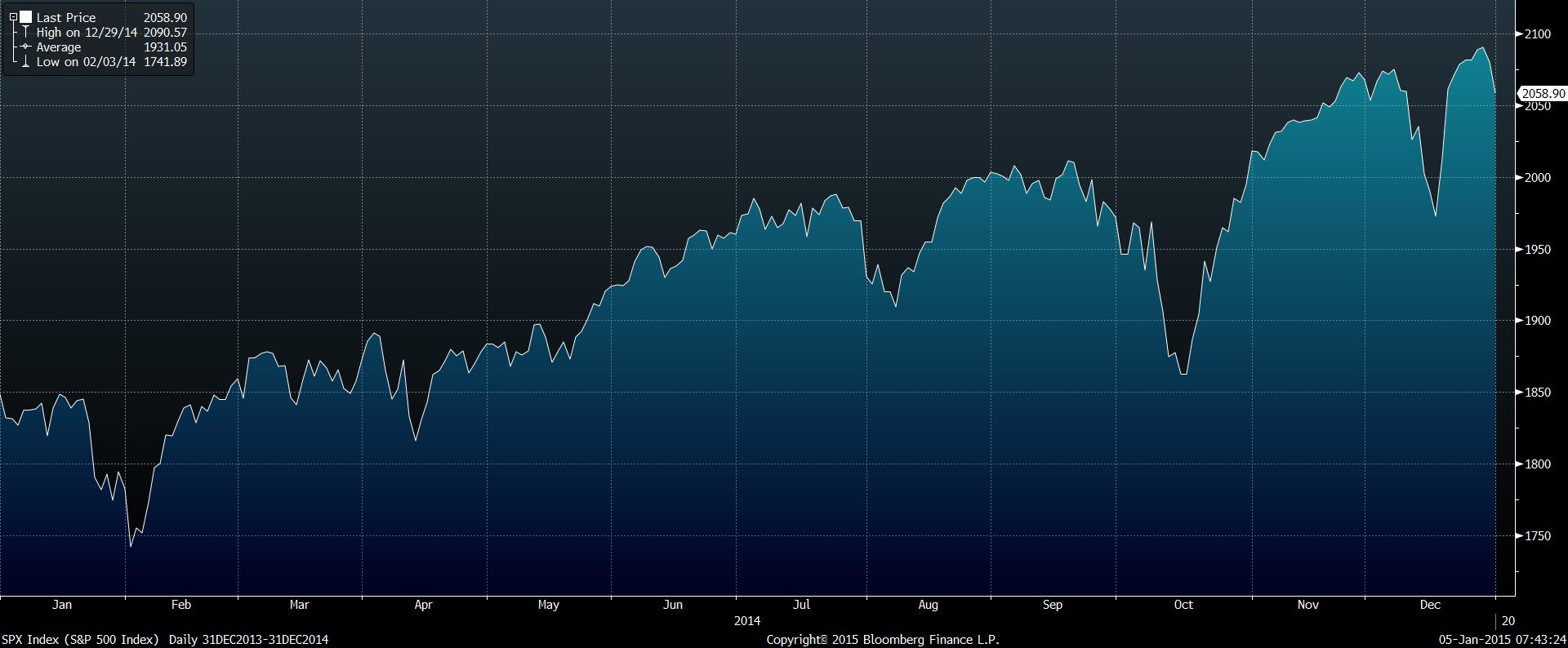As we enter the start of another year, it is relatively easy to come across 2015 market forecasts when perusing the financial news. Recently, we expressed our disdain for sales forecasts for the holiday season. In general, we are skeptical about the value of forecasts. It is simply too hard to reliably predict what might happen next week, let alone next year. About the only thing we can comfortably say about the U.S. markets in 2015 is that we expect them to open at 9:30 AM and close at 4:00 PM about 250 times (365 days less holidays and weekends).
After generating robust gains in 2013, the S&P 500 Index delivered returns that were modestly ahead of the long-term averages in 2014 (gaining 11.4% on a price basis and 13.7% on a total return – dividends included – basis). As we look forward to 2015, the one thing we know about the market is that something we do not currently foresee will happen. In 2014, it was the collapse in oil prices, as crude prices fell about 50% from their mid-year highs to levels not seen for more than five years. Given the cloudiness of our crystal ball, we are somewhat reluctant to guess what 2015’s unexpected event might be. Currently, the biggest perceived risk is that economic weakness in countries outside the U.S. could ultimately have a negative impact within our borders.
2014 S&P Daily Close
In the U.S., economic growth strengthened as the year went on. This led to the cessation of the Fed’s bond buying program known as quantitative easing. Current expectations are that the Fed will end its Zero Interest Rate Policy and start raising rates slowly in 2015. However, rates are not currently expected to reach the Fed’s long-term 2% target until at least 2016. A strong economy and the initial efforts to raise rates are usually positive for the markets. At the same time, the uncertainty about when and how fast rates will rise increases uncertainty. This should lead to elevated levels of market volatility.
Lower oil prices should leave consumers with more disposable income and also help keep inflation relatively benign. The U.S. stock market seems likely to benefit from such trends. On the other hand, there are concerns about Europe, Russia, and slowing growth in China— and their related potential implications for the credit and currency markets.
Against this backdrop our 2015 view is that the U.S. stock market will tend up rather than down. We think interest rates will move higher and market volatility will increase. At the same time, we note that market strategists typically take a positive view when forecasting the markets (for example, in the December 13 edition of Barron’s, not a single market pundit predicted a down market in 2015). It is also generally more acceptable to have the market go down when you forecast gains than it is to have the market go up when you forecast losses. Regardless of what actually happens, we will remain true to our value-based approach and will continue to seek well-managed, attractively valued securities that we believe have the potential to deliver long-term gains for client portfolios.



